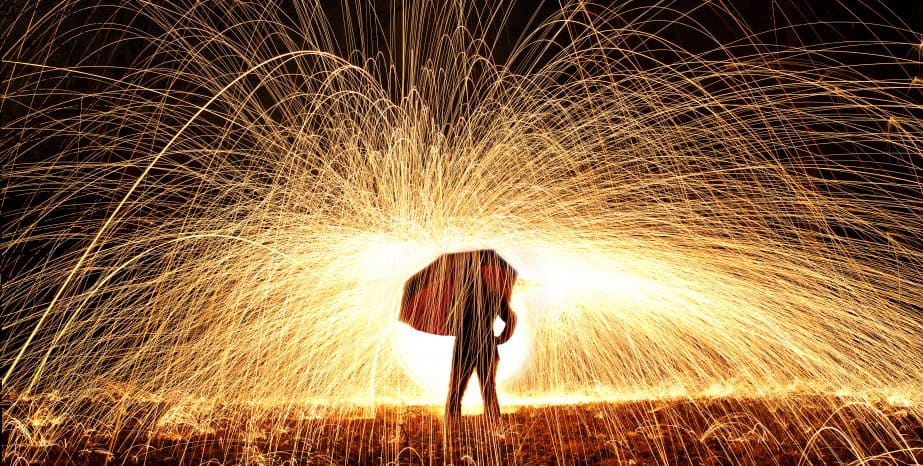
A Closer Look at Fireworks Injuries
In ancient times, the Chinese used fireworks to ward off evil spirits. Therefore, shooting off fireworks seemed like a good way to celebrate the new year. This tradition continues today. Unfortunately, the fireworks used today aren’t much different from those first Chinese fireworks. So, the injury risk is high.
As outlined below, fireworks can cause several kinds of serious injuries, mostly burns. These burns usually leave physical and psychological scars.
If your New Years fireworks celebration takes a tragic turn, a Los Angeles personal injury attorney might be able to obtain substantial compensation in court. This compensation usually includes money for economic losses, such as medical bills, and noneconomic losses, such as pain and suffering. Due to the nature of these claims, additional punitive damages are often available as well.
Kinds of Fireworks Injuries
Firecrackers and sparklers account for most burn injuries. Firecrackers usually contain picric acid, an explosive compound frequently used in artillery shells. Sparklers burn at temperatures of up to 2,000 degrees. That’s hot enough to melt most metals.
Hand and finger burns account for about a third of all fireworks injuries in California. Other common burns include the eyes, head, ear, and face.
In some cases, fireworks could also cause hearing loss. Exposure to noises as low as 35 decibels, which is basically a lawnmower engine, could cause this injury. If doctors intervene early enough, hearing loss is relatively easy to address. In more advanced cases, the only option is usually risky and invasive surgery.
Manufacturing Defects
Most fireworks sold in America are made in China and other foreign countries with no labor laws or product safety requirements. If workers get fatigued, they make mistakes. Common manufacturing defects include:
- Short fuses,
- Inadequate packaging,
- Improper amount of explosive,
- Mislabeling, and
- Product instability.
Usually, manufacturers are strictly liable for defects which arise before the product hits retail shelves. This means manufacturers must not only properly assemble fireworks. They must also ensure that these products are hearty enough to withstand the long voyage to SoCal.
Sometimes, a latent manufacturing defect causes illness or injury. NDMA contamination in Zantac is a good example.
N-Nitrosodimethylamine is one of the most dangerous carcinogens in the world. At extremely low levels, it’s usually not harmful. But even a few particles above the limit could cause a serious or fatal illness.
In this case, NDMA is not a by-product of the manufacturing process. Instead, the contamination develops if the pills are stored too long at room temperature. So, NDMA contamination is not technically a manufacturing defect in many cases. The particles appear when the pills are stored on a retailer’s shelf or a consumer’s medicine cabinet.
However, the manufacturer is still strictly liable for such defects. The metaphorical fuse was lit during the manufacturing process.
Design Defects
Most fireworks injury claims involve design defects. Frequently, a design defect is a unique problem. The 1970s Ford Pinto is a good example. Engineers placed the car’s gas tank outside the rear axle. So, it was prone to rupture and explosion.
Fireworks are different since they are inherently dangerous products. There is no way to safely make these products. SInce fireworks are always “defective,” injury claims usually rely on the failure-to-warn theory. In California, the elements for this claim are:
- The manufacturer made fireworks, firearms, industrial solvents, or another dangerous product,
- The manufacturer knew about potential problems or side effects,
- Using, or misusing the product in a foreseeable way, created a significant danger,
- Ordinary consumers would not have recognized the risk, and
- The product caused injury.
Until recently, the so-called “it is what is is” doctrine was the most effective defense to these claims. Fireworks explode, solvents dissolve surfaces, firearms shoot, and so on.
But an increasing number of courts are challenging this defense. Today’s fireworks are extremely powerful. According to some judges, it’s reasonable to ask if such a hazardous product should be for sale.
Another potential defense relates to the third bullet above. The unforeseeable misuse defense could work against manufacturing defect or design defect claims.
Vending machine injuries are a good example. These machines include warnings not to jostle them or place your hand inside them. However, people inevitably do so. Therefore, the manufacturer is strictly liable for such injuries. An unforeseeable misuse is something like this. If emergency responders had indeed sawed Homer’s arms off, the manufacturer probably would not have been responsible for his injury.
Fireworks manufacturers have a duty to sell safe products. For a free consultation with an experienced personal injury attorney in Los Angeles, contact the Law Offices of Eslamboly Hakim. Lawyers can connect injured victims with doctors, even if they have no insurance or money.
Photo Credit: Storyblocks
Sharona Hakim
Sharona Eslamboly Hakim, Esq. is a successful personal injury attorney and the principal of the Law Offices of Eslamboly Hakim firm in Beverly Hills, California.









